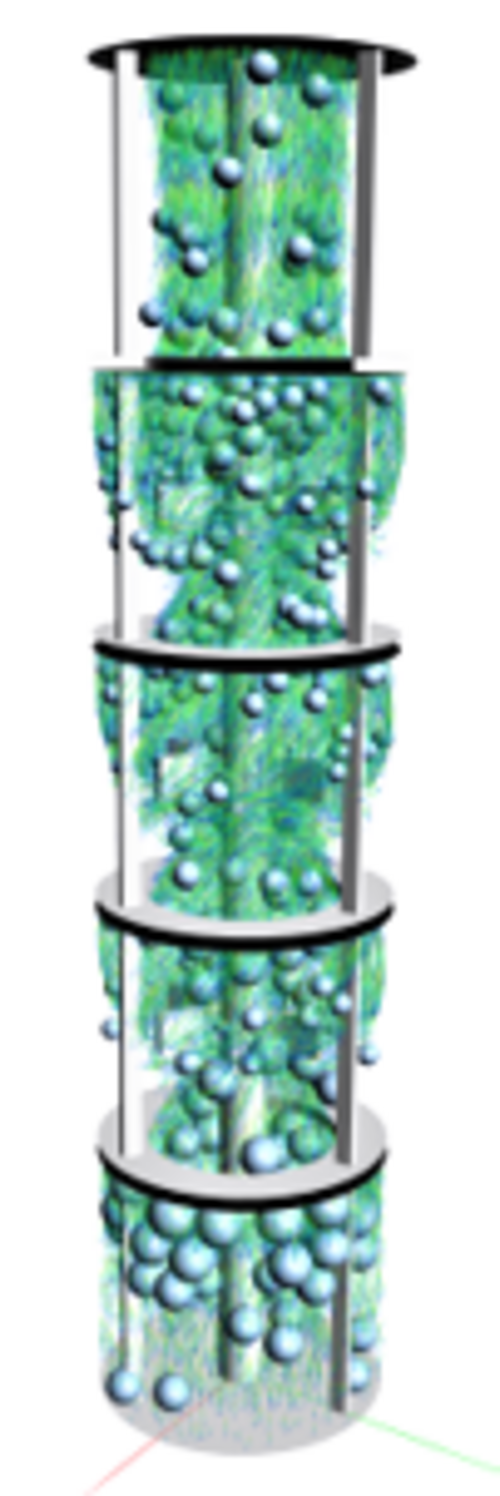Illustrate Complicated Flow Systems
Hydrodynamics plays a crucial role in process engineering. CFD simulations are nowadays an effective and inexpensive tool for simulating complicated flow systems. At the same time, they allow important parameters, e.g. velocity and phase boundary shape of the flow, to be determined and these findings to be used for more accurate equipment design.
Computational Fluid Dynamics (CFD) also makes it possible to resolve local phenomena (dead zones, residence time, vortex formation, phase contact), which are sometimes difficult to measure or often cannot be detected during operation. Investigations on the PC can minimize investment costs as well as operating costs. CFD also makes a significant contribution to the digitization of equipment, since uncertainties in the formation of correlations can be minimized.
Multiphase Systems with Mass Transfer
The efficiency of multiphase systems with mass transfer is determined by the local hydrodynamics. Especially in liquid-liquid extraction columns, the droplet size is subject to continuous change and thus affects the phase fraction as well as the concentration profile of the continuous as well as disperse phase. To account for the change, commercial and open-source CFD codes have been coupled with population balance modeling, allowing consideration of local droplet size. Various coalescence and decay models were investigated and validated with experimental data. Consideration of mass transfer models also allowed a description of the concentration profile in the disperse as well as the continuous phase.
On this basis, it is also possible to calculate the axial dispersion more accurately with the aid of Euler-Lagrange modeling. The simulation results were validated with experimental data at different boundary conditions (volume flow rates, rotational speed) as well as different column types (Kühni, RDC).
By taking reaction and particle oscillation into account, a significant contribution was made to the optimized description of reactive bubble columns. An Euler-Euler approach for large-scale columns and an Euler-Lagrange approach for the pilot plant scale were developed and the interaction between reaction and hydrodynamics was investigated in more detail.

Wetting
Many biological and pharmaceutical substances are thermally unstable. Distillations must therefore be carried out under vacuum, which is technically done in packing columns.
Within this work project, the nature of the two- or three-phase flow (liquid-liquid-gas) in an ordered packing was determined in connection with the influencing parameters of gas or liquid loading and properties of the fluids (viscosity, surface tension, wetting, etc.), by CFD simulations and subsequently validated by experimental observations.
The phase interface plays an important role in separation processes, especially for mass or heat exchange.
 Go to JKU Homepage
Go to JKU Homepage


